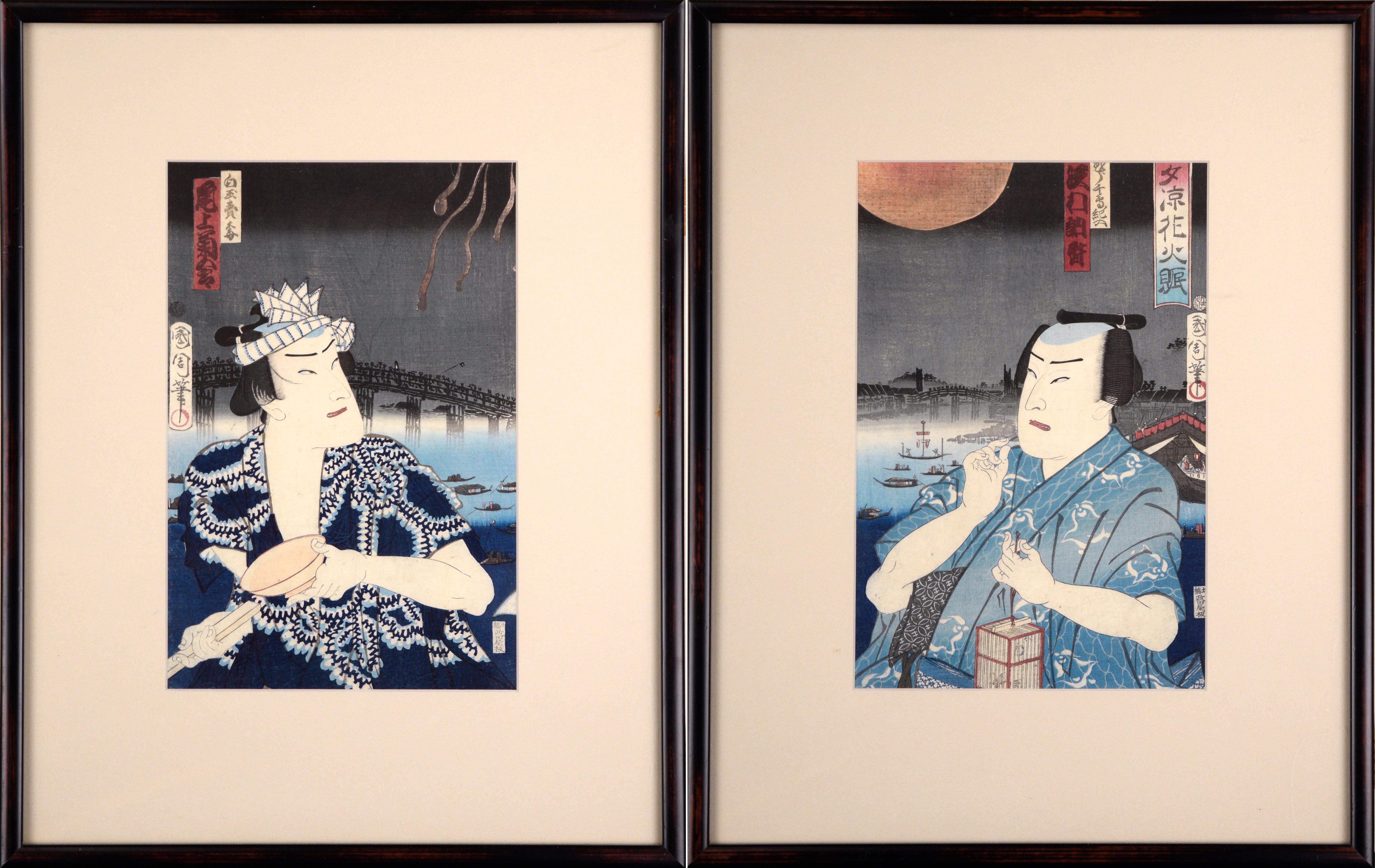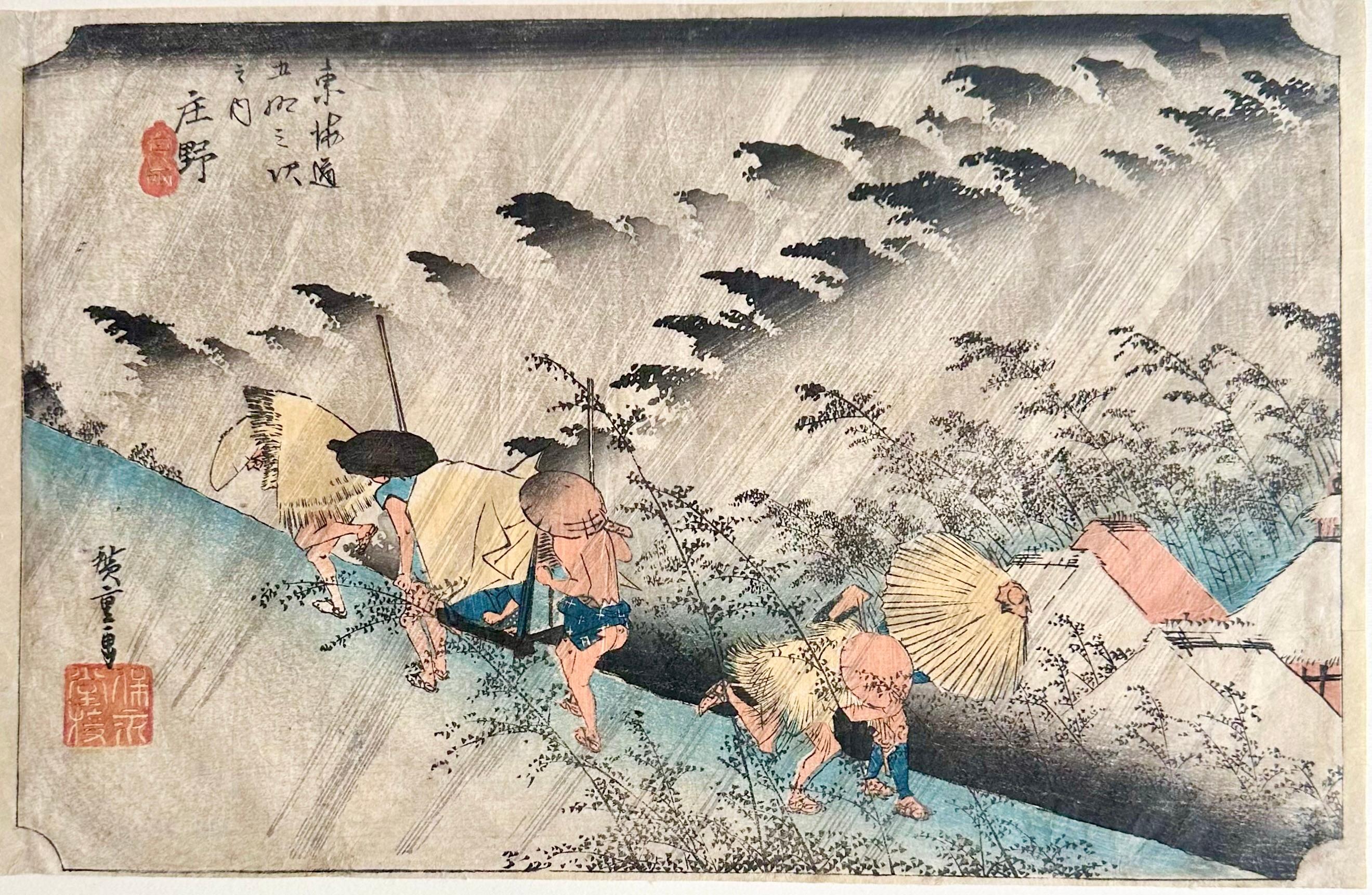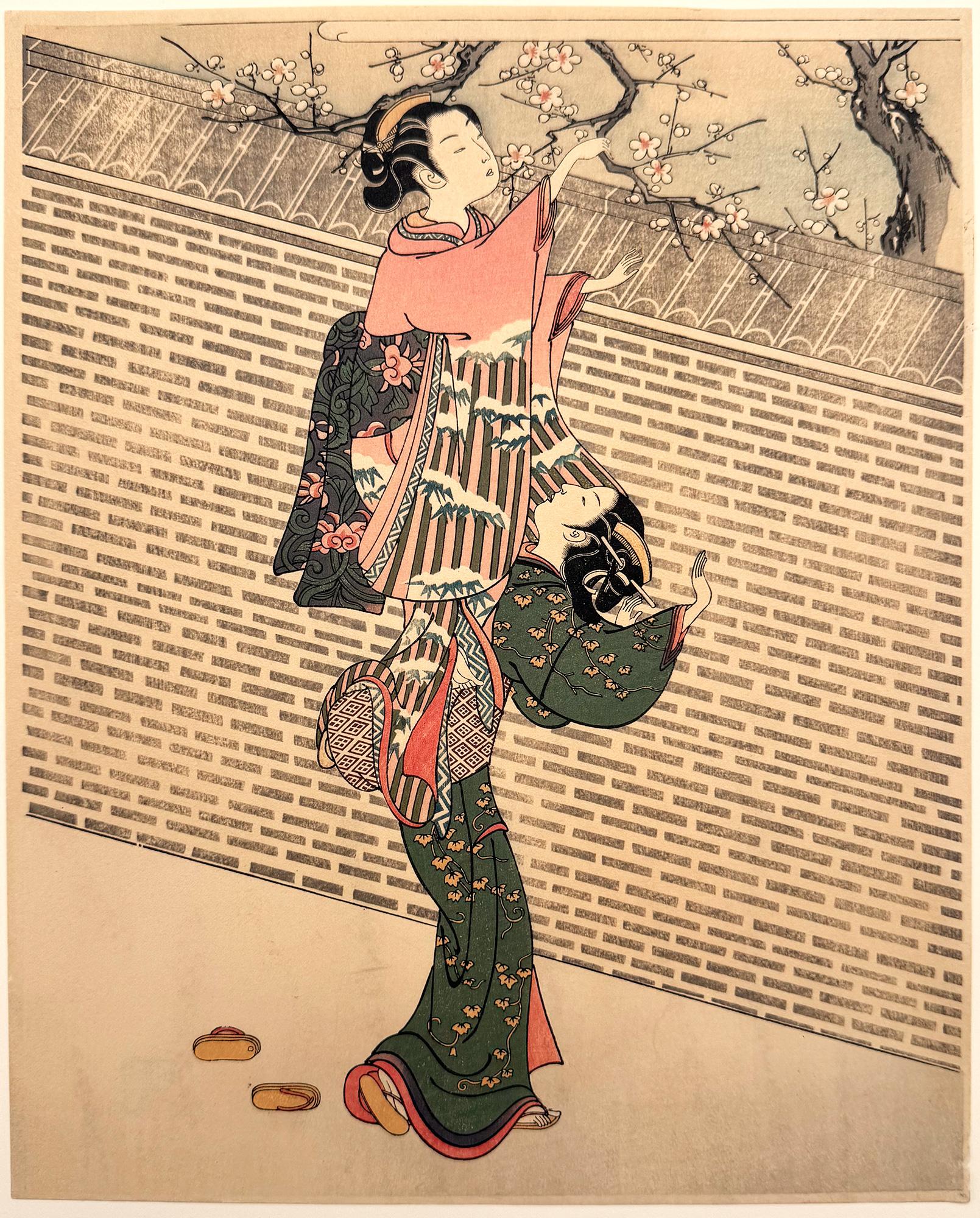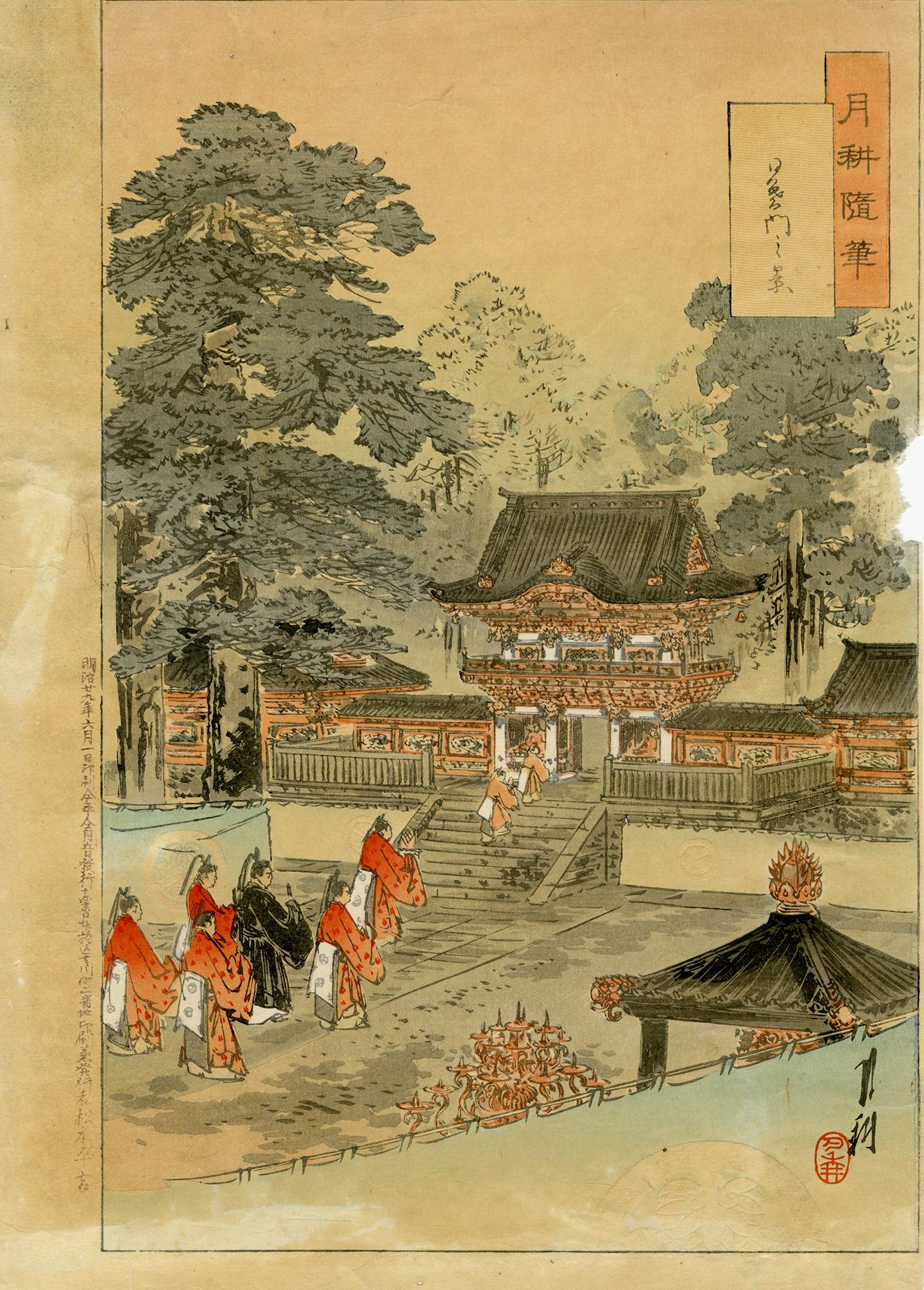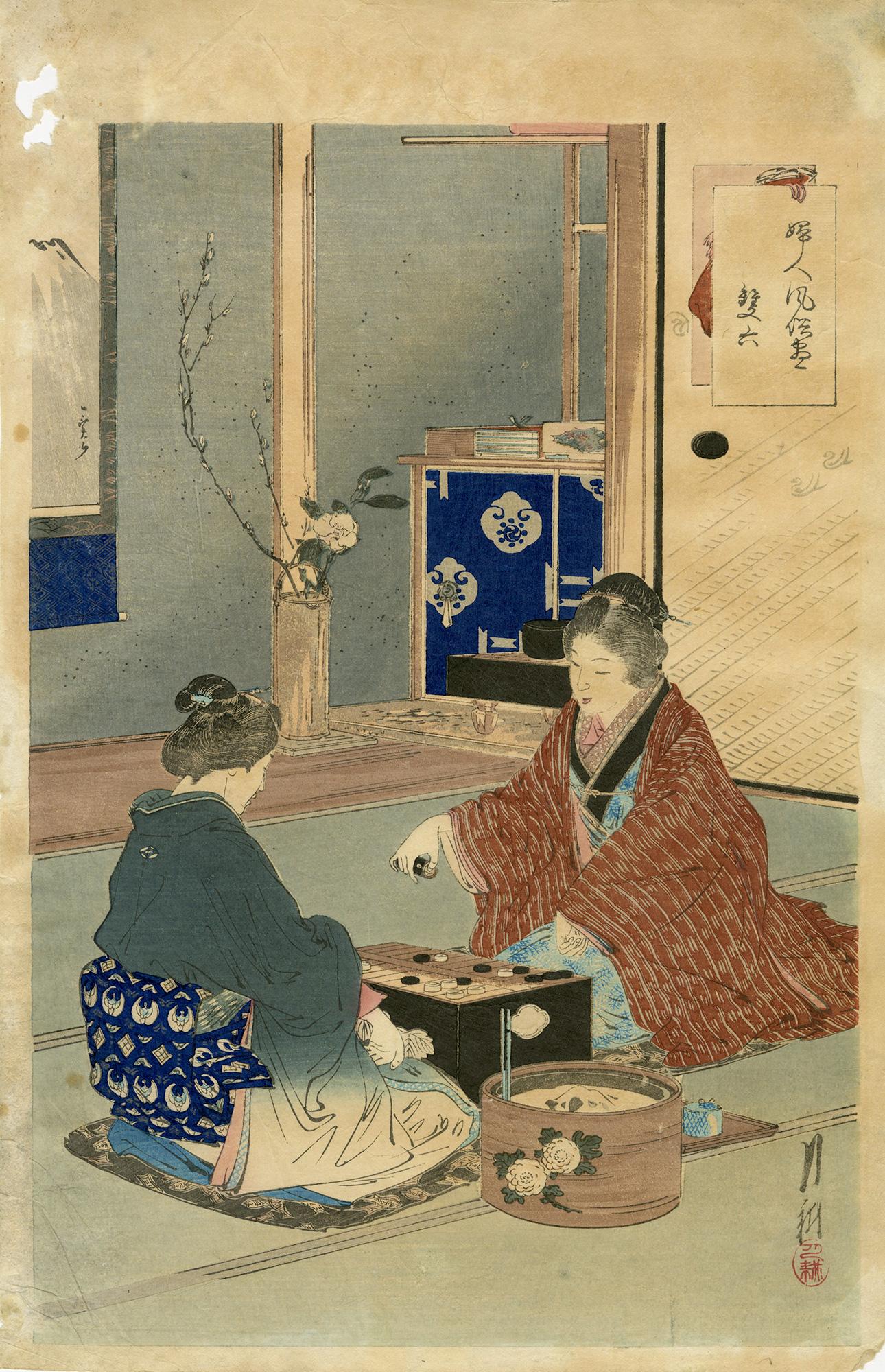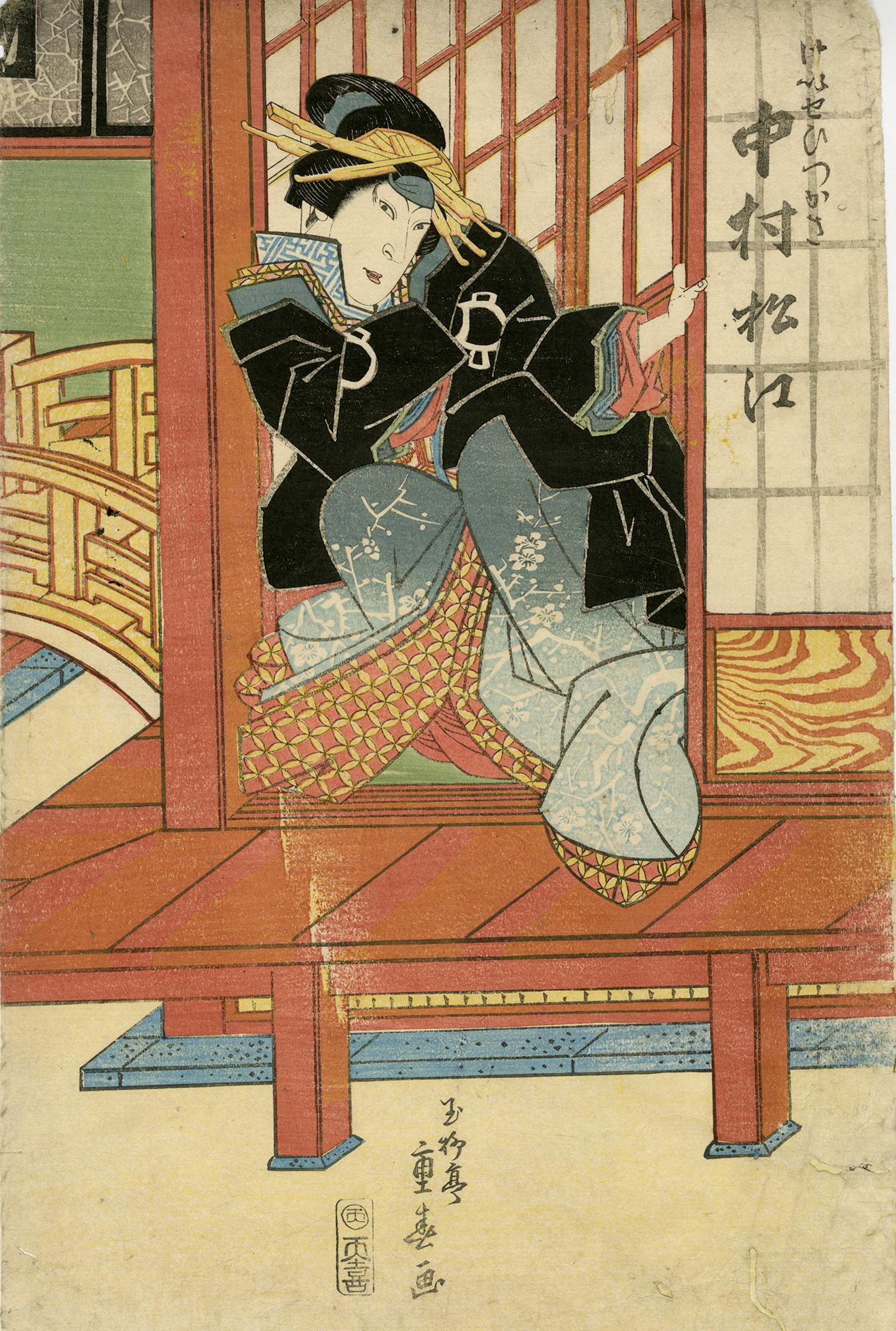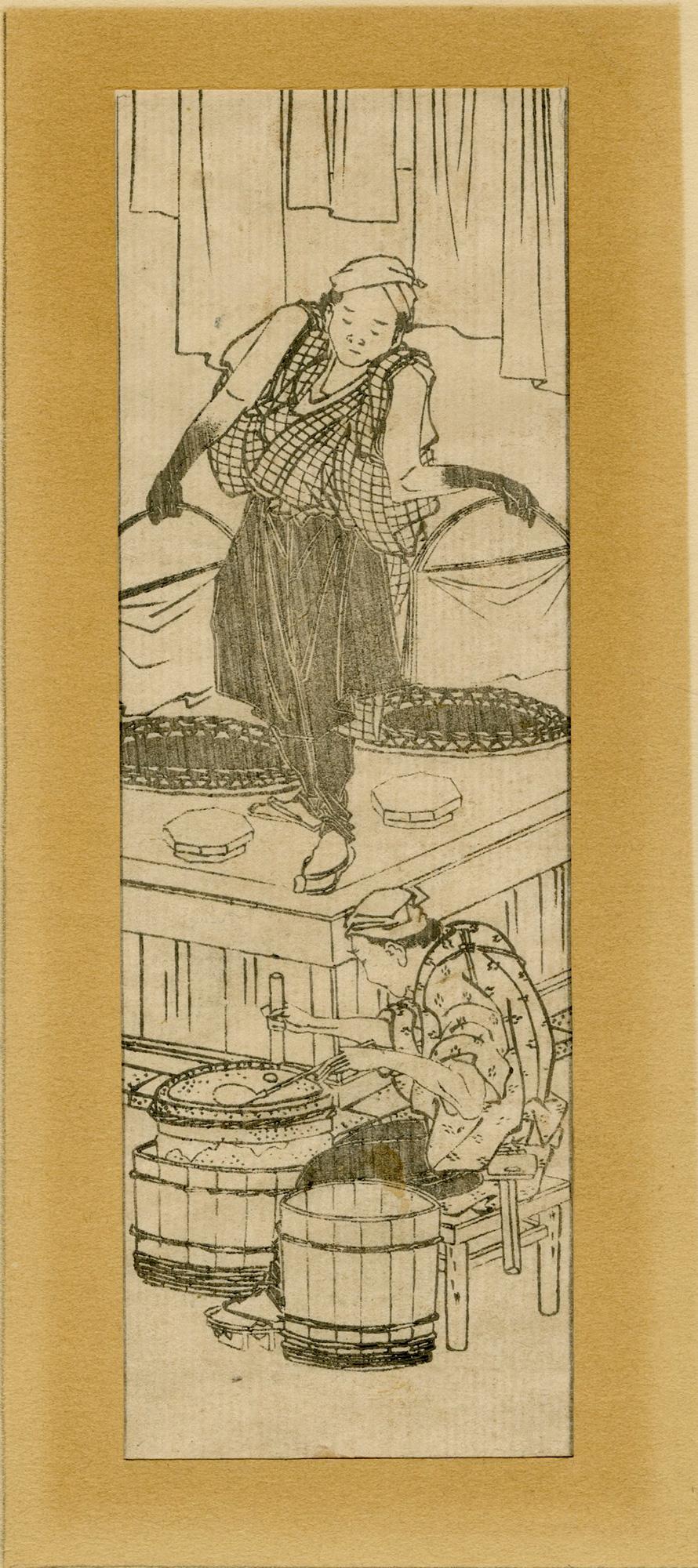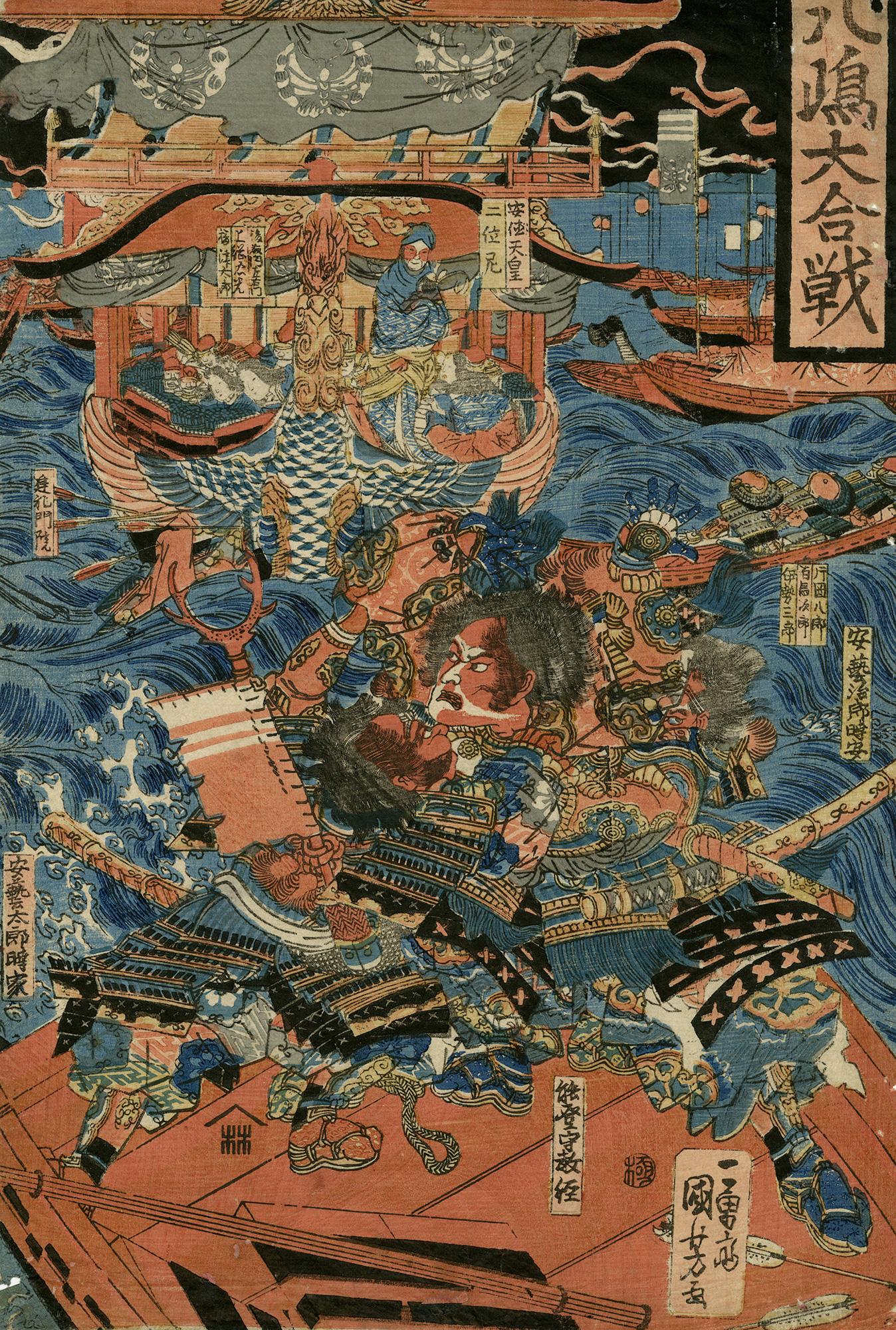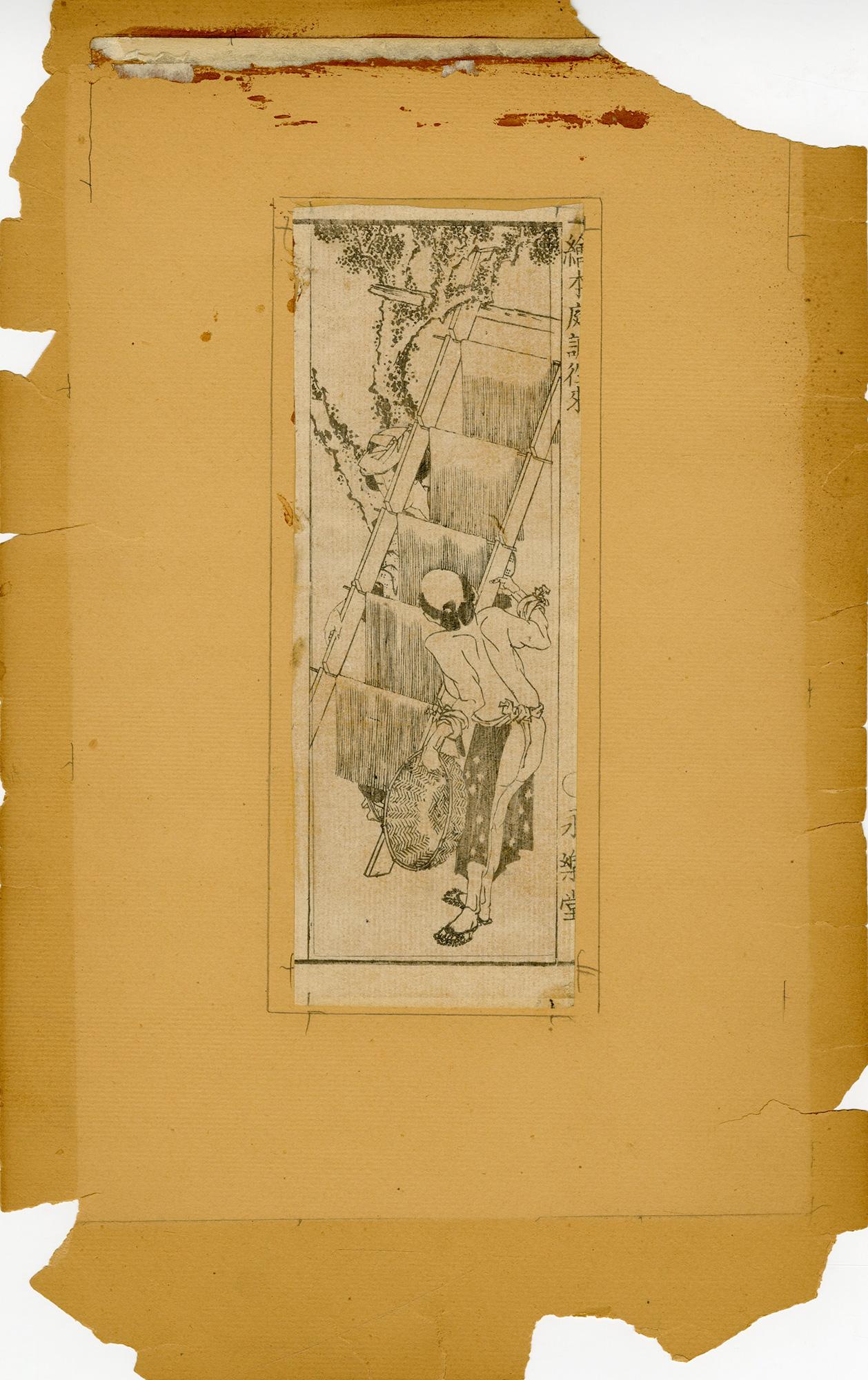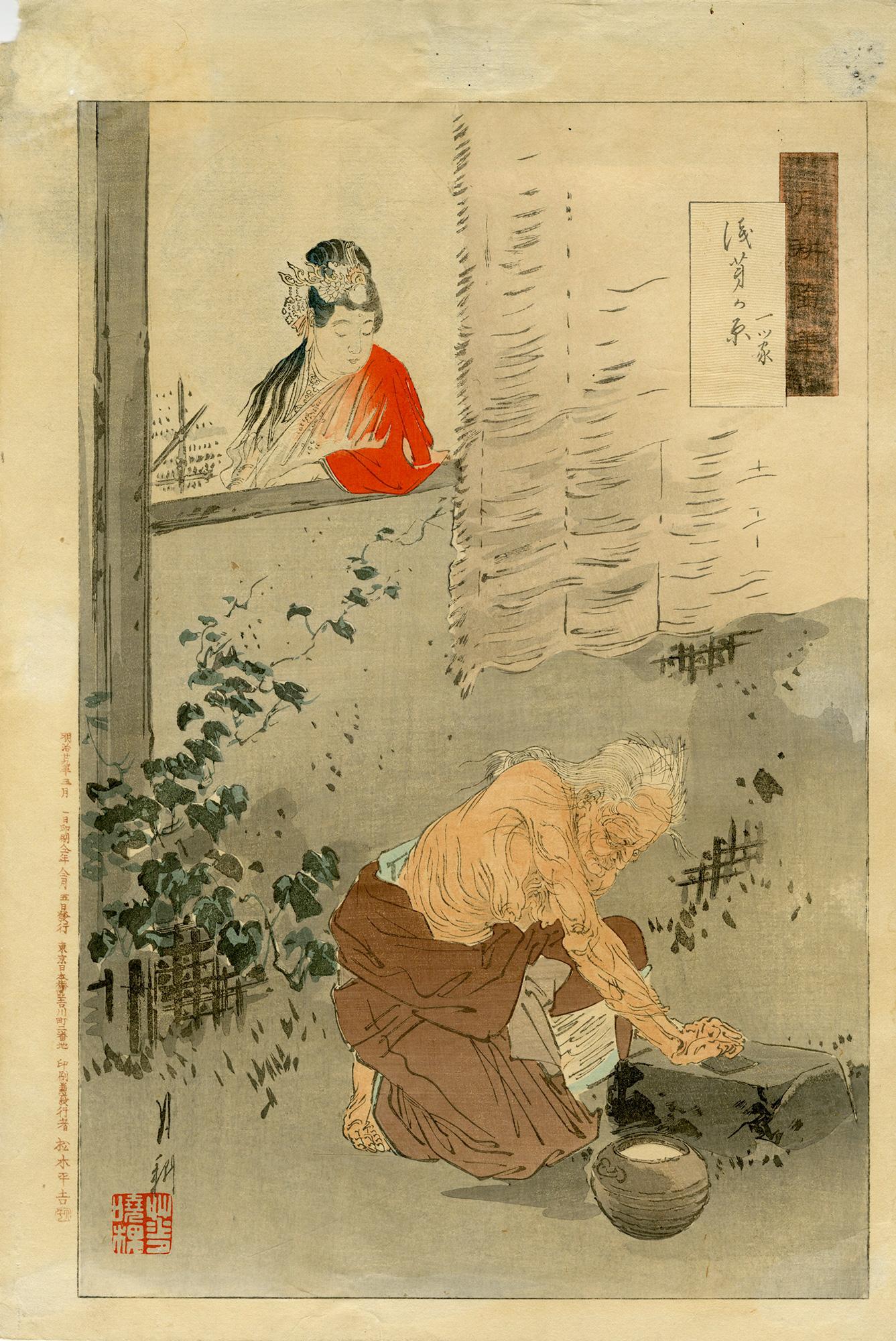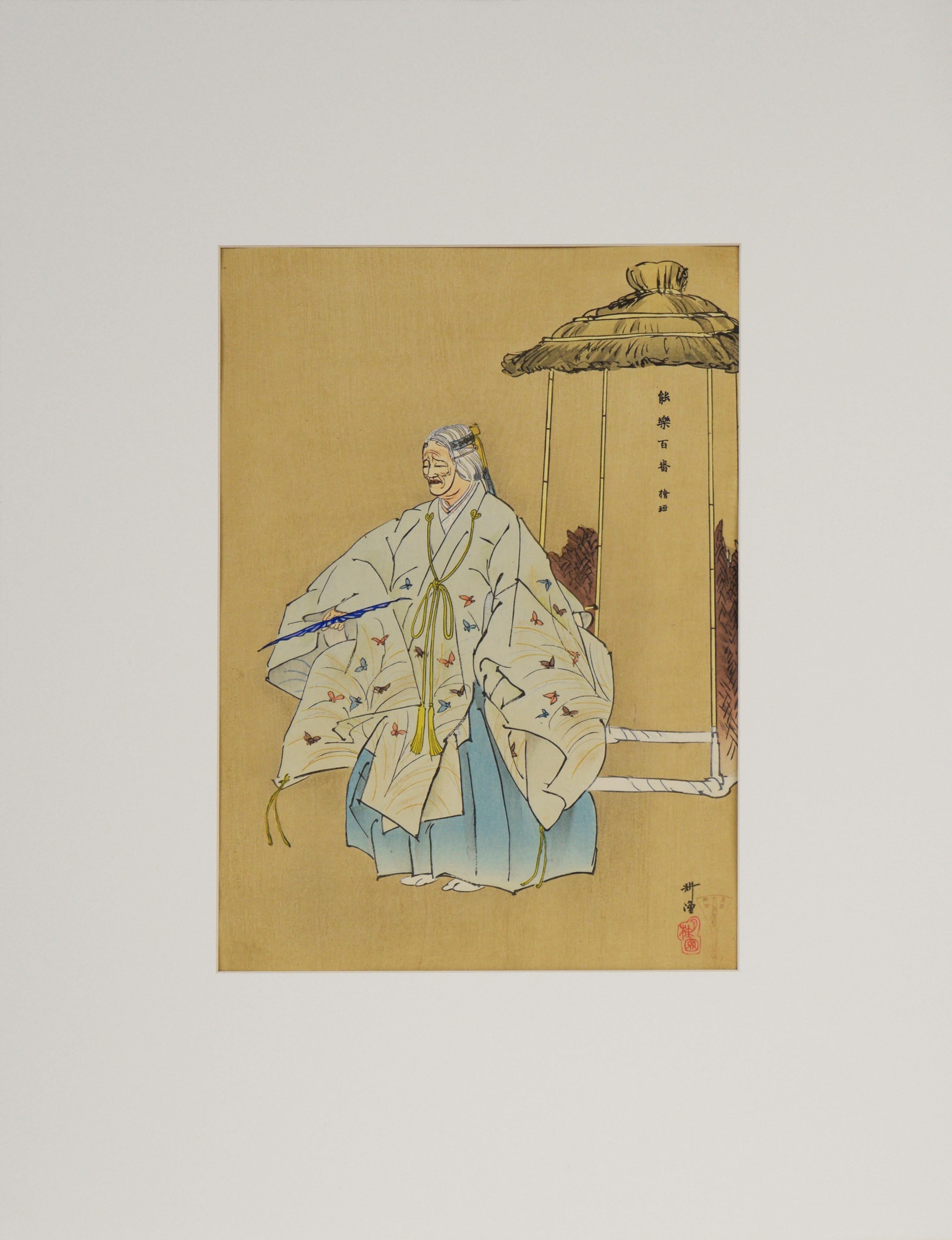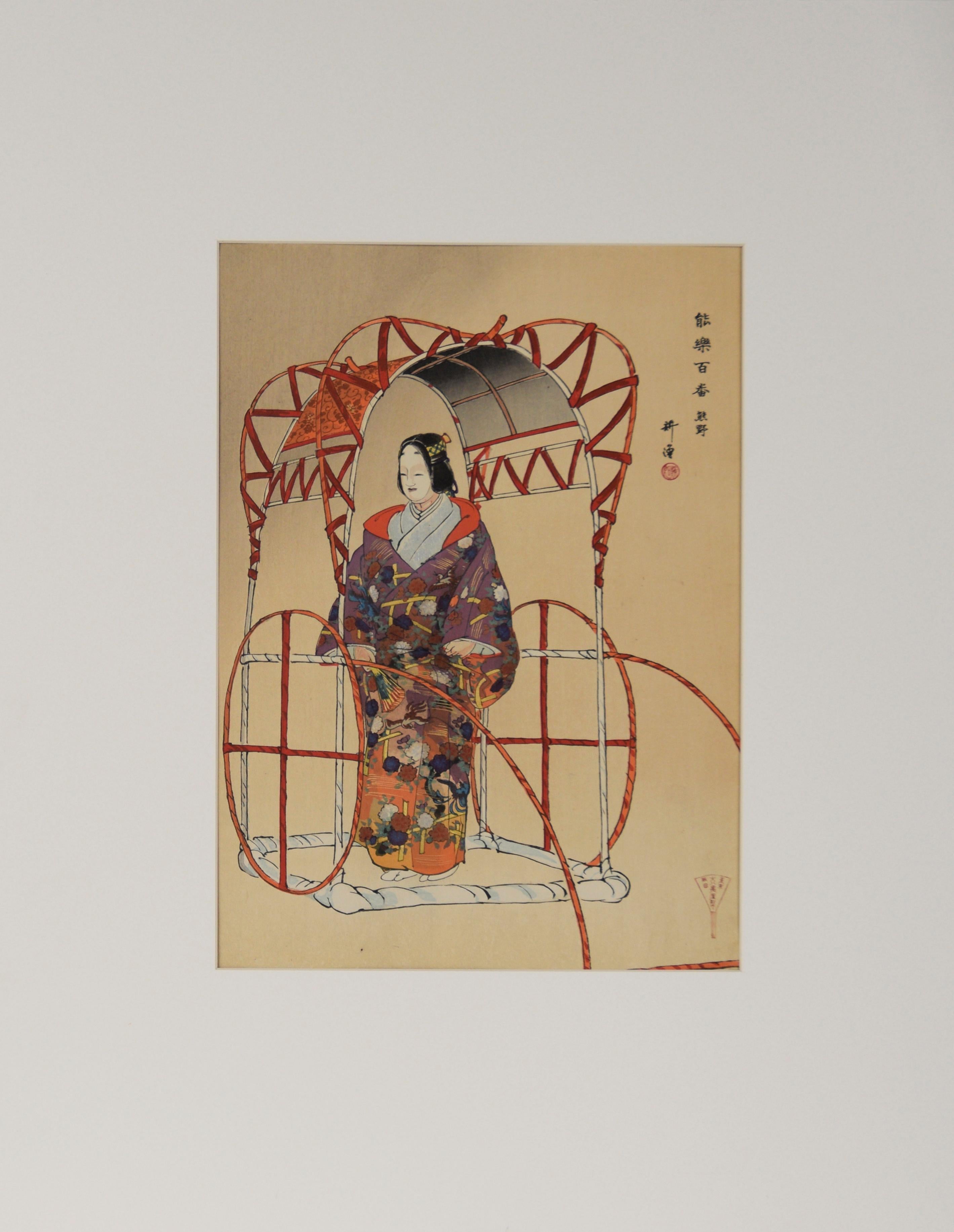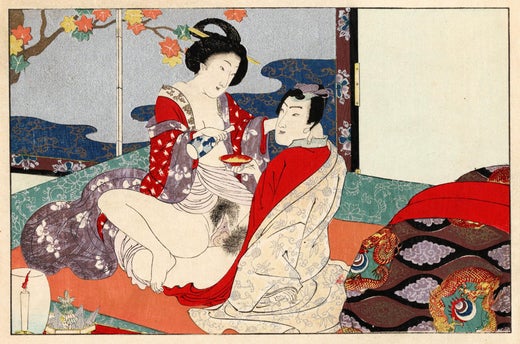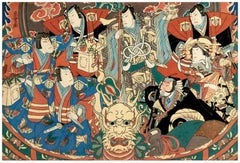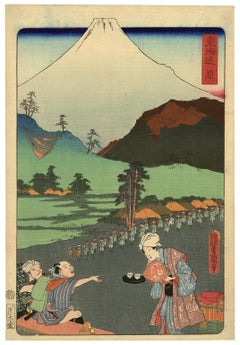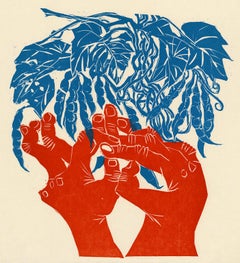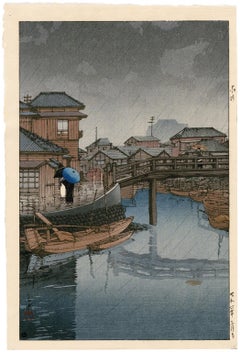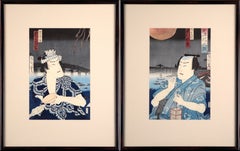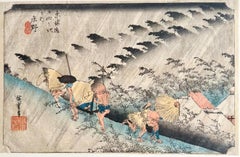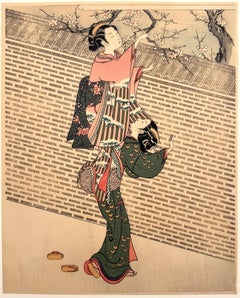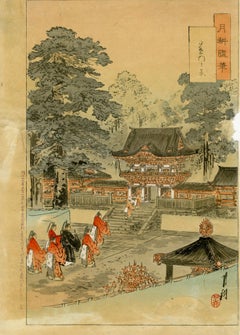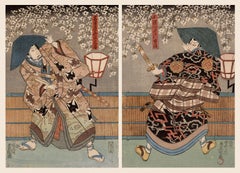
Samurai Warriors Under Cherry Blossoms — 1850s Japanese Kabuki Woodblock
View Similar Items
Want more images or videos?
Request additional images or videos from the seller
1 of 5
Utagawa Kunisada (Toyokuni III)Samurai Warriors Under Cherry Blossoms — 1850s Japanese Kabuki Woodblock1849-53
1849-53
Price:$550
About the Item
- Creator:Utagawa Kunisada (Toyokuni III) (1786-1864, Japanese)
- Creation Year:1849-53
- Dimensions:Height: 15 in (38.1 cm)Width: 10 in (25.4 cm)
- Medium:
- Movement & Style:
- Period:
- Condition:
- Gallery Location:Myrtle Beach, SC
- Reference Number:Seller: 981971stDibs: LU532312738222
Utagawa Kunisada (Toyokuni III)
Born in the Honjo district of Edo as Kunisada Tsunoda, Kunisada’s family owned a small hereditary ferryboat service. Though his father, an amateur poet, died when Kunisada was a child, the family business provided some financial security. During his childhood, he showed considerable promise in painting and drawing. Due to strong familial ties with literary and theatrical circles, he spent time studying actor portraits. At age 14, he was admitted to study under Toyokuni, head of the Utagawa school. Kunisada's work embodies the characteristics of the Utagawa school, focusing on traditional subjects such as kabuki, bijin (beautiful women), shunga (erotic prints), and historical prints. His first known print dates to 1807, his first illustrated book to 1808. Kunisada’s career took off from the beginning. Many of his works became overnight successes and he was considered the “star attraction†of the Utagawa school. He signed his works “Kunisada,†sometimes with the studio names of Gototei and Kochoro affixed. In 1844, he adopted the name of his teacher and became Toyokuni III. Kunisada passed away in 1864 in the same neighborhood that he was born. He was 70 years old. Kunis
About the Seller
5.0
Recognized Seller
These prestigious sellers are industry leaders and represent the highest echelon for item quality and design.
Platinum Seller
Premium sellers with a 4.7+ rating and 24-hour response times
Established in 1995
1stDibs seller since 2016
314 sales on 1stDibs
Typical response time: 1 hour
Associations
International Fine Print Dealers Association
Authenticity Guarantee
In the unlikely event there’s an issue with an item’s authenticity, contact us within 1 year for a full refund. DetailsMoney-Back Guarantee
If your item is not as described, is damaged in transit, or does not arrive, contact us within 7 days for a full refund. Details24-Hour Cancellation
You have a 24-hour grace period in which to reconsider your purchase, with no questions asked.Vetted Professional Sellers
Our world-class sellers must adhere to strict standards for service and quality, maintaining the integrity of our listings.Price-Match Guarantee
If you find that a seller listed the same item for a lower price elsewhere, we’ll match it.Trusted Global Delivery
Our best-in-class carrier network provides specialized shipping options worldwide, including custom delivery.More From This Seller
View All'Seven Actors in a Dragon Boat' — Edo period Kamigata Woodblock Print
Located in Myrtle Beach, SC
Munehiro Hasegawa, 'Seven Kabuki Actors in a Dragon Boat,' woodblock print, c. 1850, Osaka-e, Kamigata-e. Signed 'Munehiro' in the block, upper left. A fine impression with fresh co...
Category
Mid-19th Century Edo Figurative Prints
Materials
Woodcut
'Tokaido' — Mt. Fuji Rising – Mid-Nineteenth Century Woodblock Print
By Utagawa Kunisada (Toyokuni III)
Located in Myrtle Beach, SC
Utagawa Kunisada (Tokoyuni III), 'Tokaido', color woodblock, 1863. Signed in the cartouche, lower right. A fine impression, with rich, fresh colors and pronounced woodgrain, the full...
Category
1860s Edo Figurative Prints
Materials
Woodcut
'Drop of Life' — from 'Solitude' for Henry David Thoreau's 'Walden'
Located in Myrtle Beach, SC
Naoko Matsubara, 'Drop of Life' for the portfolio 'Solitude', color woodcut, 1971. A fine impression with fresh, vivid colors, on cream laid Japan paper, the full sheet with margins,...
Category
1970s Modern Figurative Prints
Materials
Woodcut
'Rain at Shinagawa, Ryoshimachi' — Showa-era Woodblock Print
By Kawase Hasui
Located in Myrtle Beach, SC
Kawase Hasui, 'Rain at Shinagawa, Ryoshimachi' from the series 'Selection of Views of the Tokaido', woodblock print, 1931. A very fine, atmospheric impression, with fresh colors; the...
Category
1930s Showa Figurative Prints
Materials
Woodcut
'Lakeside Shower, Matsue' — Showa-era Woodblock Print
By Kawase Hasui
Located in Myrtle Beach, SC
Kawase Hasui, 'Chihan no Ame, Matsue' (Lakeside Shower, Matsue), color woodblock print, 1932. A fine, atmospheric impression, with fresh colors; the full sheet, from a postwar editio...
Category
1930s Showa Figurative Prints
Materials
Woodcut
Der Hirte (The Shepherd) — original hand-coloring
Located in Myrtle Beach, SC
Richard Seewald, 'Der Hirte (The Shepherd)', woodcut with hand coloring, c. 1919. Unsigned as published in 'Genius', Vol 1, no. 1, 1919. A fine, richly...
Category
1910s Expressionist Figurative Prints
Materials
Woodcut
You May Also Like
Kabuki Actor Diptych, Late 19th Century Figural Japanese Woodblock Prints (Pair)
By Kunichika Toyohara
Located in Soquel, CA
Beautiful late 19th century Japanese woodblock print diptych of two kabuki actors by Kunichika Toyohara (Japanese, 1835-1900). This pair of prints is united by a continuous landscape...
Category
1870s Edo Figurative Prints
Materials
Paper, Ink, Woodcut
HIROSHIGE UTAGAWA I, Sudden Rain in Shono, Shôno, hakuu, Sudden Shower
By Utagawa Hiroshige
Located in Torino, IT
HIROSHIGE UTAGAWA I, Edo 1797 - 1858
Sudden Rain at Shono, Shôno, hakuu, Sudden Shower at Shōno
Nishiki-e. Color woodcut, signed in plate: Hiroshige ga
Series: Tokaido gojusan tsug...
Category
1830s Edo Figurative Prints
Materials
Woodcut
Plucking a Branch from a Neighbor's Plum Tree
By Suzuki (Hozumi) Harunobu
Located in Middletown, NY
A mischievous tableau with sexual overtones.
Tokyo: Shuei-Sha, 1768.
Woodblock print in colors printed on laid mulberry paper, 10 3/4 x 7 7/8 inches (273 x 200 mm), full margins. I...
Category
Mid-18th Century Edo Portrait Prints
Materials
Handmade Paper, Watercolor, Woodcut
Toshogu Shrine
Located in Middletown, NY
In image of the Tokugawa family paying homage to Tosho-gu Shrine in Nikko.
Tokyo: Matsuki Heikichi, 1896
Woodcut in ink with embossing and hand-coloring in watercolor on handmade m...
Category
Late 19th Century Edo Figurative Prints
Materials
Watercolor, Handmade Paper, Woodcut
Actor Iwai Shigaku as Somenoi in "Denka chaya adauchi"
By Kuniyoshi
Located in Middletown, NY
Actor Iwai Shigaku as Somenoi in "Denka chaya adauchi" (Revenge at the Denka Teahouse), by Shigeharu, Ryusai (also called Kuniyoshi)
Tokyo: Horie Ichiba Wataki, 1835.
Woodcut on la...
Category
Early 19th Century Edo Portrait Prints
Materials
Laid Paper, Handmade Paper, Woodcut
Dyeing Paper
Located in Middletown, NY
Japan: circa 1770.
Woodcut on cream laid paper, 7 1/4 x 2 1/2 inches (182 x 63 mm), narrow margins. Laid down to non-archival board with scattered soiling and some adhesive staining...
Category
Late 18th Century Edo Figurative Prints
Materials
Handmade Paper, Laid Paper, Woodcut
Recently Viewed
View AllMore Ways To Browse
Ukiyo Samurai
Cherry Blossom Dress
Hokusai Fuji
Japanese Woodblock Print Kuniyoshi
Dollar Watch
Edgar Degas Bronze
Erte Signed Serigraph
Green Vintage Suitcase
J L Metz
Journal Des Dames Et Des Modes
Lenin Poster
Picasso Bouquet
Picasso Dove Of Peace
Picasso Imaginaire 1969
Romare Bearden Collage Prints
Shepard Fairey 2000
Tanna Kasimir Hoernes
Vintage Vinyl Record Covers
